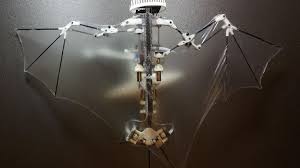
Breaking News
 $26M Frozen on Blockchain - With One Click
$26M Frozen on Blockchain - With One Click
 Italy are on national strike shutdown rejecting digital enslavement...
Italy are on national strike shutdown rejecting digital enslavement...
 The following U.S. states are currently using the rebranded "Reporty Homeland Security" so
The following U.S. states are currently using the rebranded "Reporty Homeland Security" so
 NATO Chief Urges Europe To Prepare For Long-Term World War With Russia, China, Iran & North Korea
NATO Chief Urges Europe To Prepare For Long-Term World War With Russia, China, Iran & North Korea
Top Tech News
 HUGE 32kWh LiFePO4 DIY Battery w/ 628Ah Cells! 90 Minute Build
HUGE 32kWh LiFePO4 DIY Battery w/ 628Ah Cells! 90 Minute Build
 What Has Bitcoin Become 17 Years After Satoshi Nakamoto Published The Whitepaper?
What Has Bitcoin Become 17 Years After Satoshi Nakamoto Published The Whitepaper?
 Japan just injected artificial blood into a human. No blood type needed. No refrigeration.
Japan just injected artificial blood into a human. No blood type needed. No refrigeration.
 The 6 Best LLM Tools To Run Models Locally
The 6 Best LLM Tools To Run Models Locally
 Testing My First Sodium-Ion Solar Battery
Testing My First Sodium-Ion Solar Battery
 A man once paralyzed from the waist down now stands on his own, not with machines or wires,...
A man once paralyzed from the waist down now stands on his own, not with machines or wires,...
 Review: Thumb-sized thermal camera turns your phone into a smart tool
Review: Thumb-sized thermal camera turns your phone into a smart tool
 Army To Bring Nuclear Microreactors To Its Bases By 2028
Army To Bring Nuclear Microreactors To Its Bases By 2028
 Nissan Says It's On Track For Solid-State Batteries That Double EV Range By 2028
Nissan Says It's On Track For Solid-State Batteries That Double EV Range By 2028
Bat Bot flies through the air on whisper-thin wings

Bats are strange creatures. They dart through the sky on wings made of skin, their tiny bodies swooping and swerving as they hunt insects for hours on end. They boast a compact, efficient, lightweight form, which makes them an ideal inspiration for a flapping robot. Bat Bot, created by researchers at University of Illinois at Urbana-Champaign's Coordinated Science Laboratory and the California Institute of Technology, is a high-tech flying machine inspired by bat-like efficiency.
The Bat Bot is an example of biomimicry, where engineers and scientists make a machine directly inspired by nature. It's also—as an unmanned flying machine—technically a drone, but one that doesn't rely on multiple spinning rotors like a helicopter or a rigid fixed wing, like an airplane. Instead the three-ounce robot travels with a careful flapping motion, the membrane of its thin wings carrying it through the air like an actual bat.
What use might there be for such a critter? Because its body is small and flexible, a future incarnation of the Bat Bot could fly inside collapsed buildings, maneuvering around fresh ruins to inspect the damage and search for people trapped inside.
"We imagine a second application to be just aerial assistance for humans," said Seth Hutchinson, one of the authors of the study.
"Take elderly people who live in multilevel homes, for example," he said. "Ground robots aren't able to go up and down stairs, so some kind of ability to move between floors—to bring medicines or to monitor the adults in the situation just to be sure that they're safe and haven't fallen down or something of that sort—would be a useful thing, particularly as population continues to age."
But Bat Bot needs to work on sticking its landings before it can fly medicine to seniors in distress. A future goal for the project is to have the robot perch like a bat, clinging in place, but for now that kind of precision landing is out of reach.
Still, it's impressive to see the robot flapping through the air, and it's tempting to imagine a future where this little gangly machine becomes a harbinger of rescue.
Read More...

 Carbon based computers that run on iron
Carbon based computers that run on iron

